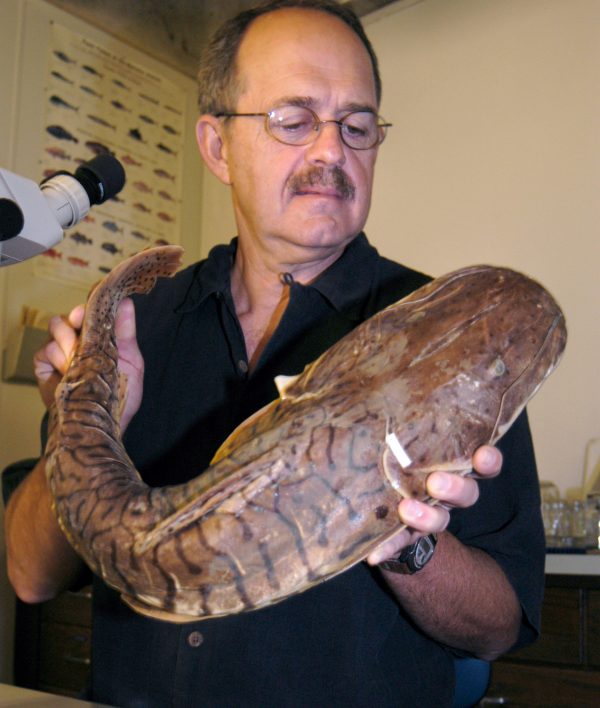The National Science Foundation has awarded the Florida Museum of Natural History at the University of Florida and four other institutions $4.7 million to discover and describe all catfish species worldwide.
This grant is one of the first of its kind awarded by the foundation to study a group of organisms worldwide. Catfish were selected because of their worldwide distribution and large number of species. Typically, the National Science Foundation, or NSF, funds projects that survey species in specific regions rather than targeting a particular taxonomic group and studying it on a worldwide basis.
“This is a new way of trying to discover and document biodiversity,” said project leader Larry Page, an adjunct curator of fishes at the Florida Museum of Natural History and principal scientist emeritus at the Illinois Natural History Survey.

“We expect to describe about 1,750 new species during the project,” said Page, who also is an affiliate professor of zoology at UF. “The (catfish) group presently contains 2,734 recognized species, or one of every four species of freshwater fish.”
Most of the work will take place in South America, Africa and Southern Asia where the largest numbers of catfish species are located.
The Florida Museum of Natural History at UF is the lead institution on the five-year project, and is partnering with researchers from the Academy of Natural Sciences of Philadelphia, the California Academy of Sciences, Auburn University and Cornell University. Nearly 250 researchers from 31 countries will participate in the project.

Florida Museum photo by Jeff Gage
“It’s important that we try and describe these species before they disappear, either from over-fishing or from habitat destruction,” said Page, who has been studying fish for more than 30 years. “It’s a conservation issue.” A large number of researchers already are working to describe catfish species, but many of them are currently unable to travel to museums in other countries to examine and compare type specimens.
The NSF grant calls for half of all specimens collected to remain in the country of origin. The other half will come back to U.S. institutions.
“I’m very optimistic that this (project) is going to work,” said co-investigator John Lundberg, curator and ichthyology department chairman for the Academy of Natural Sciences of Philadelphia. “What this project does is take the world’s taxonomic experts and allow them to work together.”
Lundberg said catfish also are an important species commercially, and some that have not been described or studied now are being harvested in some countries.
“If we don’t recognize and learn about these undescribed species, we can’t protect or manage them,” Lundberg said.
The new program, called the Planetary Biodiversity Inventory, is a joint project of the National Science Foundation and the ALL Species Foundation, a private foundation dedicated to the discovery and description of all species on Earth.
Jim Woolley, director of the biodiversity survey and inventories program at the NSF, said the project will demonstrate the feasibility of accomplishing global surveys within reasonable time frames.
“If successful, these studies will provide models for workers on other groups to accomplish similar inventories in years instead of centuries,” Woolley said.
The catfish grant is one of four Planetary Biodiversity Inventory projects currently funded. The others include classifying plants in the genus Solanum, which includes major crops such as tomatoes, potatoes and eggplants; studying plant-eating insects in the family Miridae, a worldwide group of insects important in both agriculture and as indicators of biodiversity; and describing and classifying an estimated 1,300 species of microscopic organisms called Eumycetozoa, also known as slime molds.